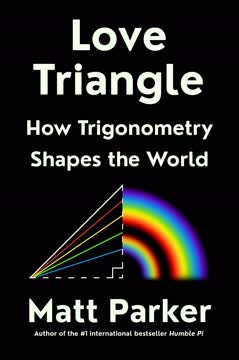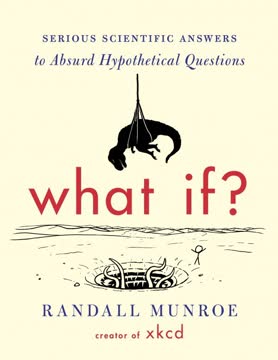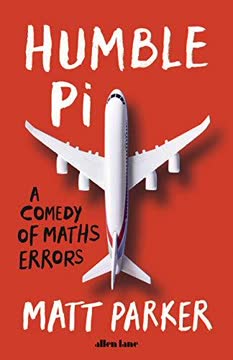Key Takeaways
1. Stranded? Determine Your Era First
We recommend proceeding through this chart first, to better orient yourself in your new period in history.
Handy Flowchart. The first step upon realizing you're stranded in the past is to determine the time period. A handy flowchart is provided to help navigate the possibilities, from the presence of dinosaurs to the existence of modern humans. This orientation is crucial for understanding the resources and challenges you'll face.
Human Evolution. A key distinction lies between 200,000 BCE and 50,000 BCE, marking the emergence of anatomically modern humans and their subsequent behavioral modernity. This period presents a unique opportunity to influence human development by introducing language and abstract thought.
Impact on History. By understanding the timeline, you can strategically apply your knowledge to accelerate technological and cultural advancements, potentially altering the course of civilization. This initial assessment is the foundation for all subsequent actions.
2. Language: The Foundation of Civilization
Language is the technology from which all others spread, and you’ve already got it for free.
Communication is Key. Spoken language is the cornerstone of civilization, enabling complex thought, shared ideas, and cultural transmission. It allows for nuanced expression and the survival of ideas beyond individual lifespans.
Teaching Language. If stranded before 50,000 BCE, prioritize teaching language to early humans, especially children. Focus on a simplified pidgin version of your native tongue, incorporating sounds already familiar to them. This can give humanity a 150,000-year head start.
Linguistic Universals. While language is arbitrary, consider incorporating linguistic universals found in all natural languages, such as pronouns, vowels, verbs, and nouns. These elements may facilitate easier adoption and communication within your new civilization.
3. Five Technologies to Kickstart Civilization
This guide will allow you to create a world like the one you left, but better.
Essential Technologies. Five fundamental technologies are crucial for building a civilization: spoken language, written language, non-sucky numbers, the scientific method, and a calorie surplus. These information-based technologies are resilient and can be implemented regardless of the time period.
Overcoming Limitations. These technologies took humanity an embarrassingly long time to develop, but you have the advantage of knowing them already. Focus on their rapid implementation to save millennia of wasted time.
Building Blocks. Each technology unlocks further advancements. Written language preserves ideas, non-sucky numbers enable precise quantification, the scientific method refines knowledge, and a calorie surplus allows for specialization and innovation.
4. Measurement: Standardize for Progress
All units of measurement are arbitrary, but the vast majority of humanity agrees that you should at least make them practical.
Practical Units. Establish a standardized system of measurement based on the metric system and the centigrade temperature scale. These units are practical, scalable, and easily reproducible, even in the distant past.
Centigrade and Kelvin. Define 0°C as the freezing point of water and 100°C as its boiling point. For a scale without negative numbers, invent the Kelvin scale, setting 0 Kelvin to -273.15°C.
Length, Weight, and Time. Recreate a meter using the provided 10cm ruler, and define a kilogram as the weight of 10 cubic centimeters of water at 4°C. Measure time using a pendulum 99.4cm long, where one second is the time it takes to swing from one end to the other.
5. Farming: From Scarcity to Surplus
It’s on calorie surpluses—and therefore farming—that civilizations are built.
End Hunting and Gathering. Transition from a hunter-gatherer lifestyle to farming to create a calorie surplus. This allows for population growth, specialization of labor, and the development of an economy.
Selective Breeding and Crop Rotation. Implement selective breeding to improve crop yields and domesticate animals. Use crop rotation to maintain soil fertility and prevent pest infestations.
Challenges of Farming. Be aware of the challenges associated with farming, including increased labor, food storage requirements, income inequality, vulnerability to attack, and the spread of animal-borne diseases.
6. Edible Plants & Animals: A Forager's Guide
Great news: you can eat anything once!
Foraging Safely. Identify edible plants and animals in your new environment. Use the universal edibility test to determine if a potential food source is safe to eat.
Useful Species. Prioritize plants and animals that have been historically useful to humans, such as apples, bamboo, barley, cacao, chili peppers, cinchona, coconuts, coffee, corn, cotton, eucalyptus, grapes, oak trees, opium poppy, papyrus, potatoes, rice, soybeans, sugarcane, sweet orange, tea, tobacco, wheat, white mulberry, white willow, and yams.
Selective Breeding. Remember that wild varieties of these species may be less palatable or nutritious than their domesticated counterparts. Use selective breeding to improve their characteristics over time.
7. Health is Wealth: Basic Medicine
The scientific method is still our best technology for uncovering, verifying, and refining correct knowledge, because what the scientific method allows us to do is make wrong knowledge gradually more correct.
Germ Theory. Understand the germ theory of disease and prioritize cleanliness to prevent infections. Wash hands regularly with soap and water, and purify drinking water through boiling and charcoal filtration.
Basic First Aid. Learn basic first aid techniques, including the Heimlich maneuver, the recovery position, CPR, and how to treat broken bones and wounds.
Vitamin Deficiencies. Be aware of the symptoms of common vitamin deficiencies and ensure a varied diet to prevent them. Consider introducing vitamin C-rich foods to prevent scurvy.
8. Engineering: Solving Problems with Machines
Now we are Become Farmers, the Devourers of Worlds.
Water and Wind Power. Harness natural forces by inventing waterwheels and windmills. These machines can grind grain, saw wood, operate bellows, and generate electricity.
Steam Engines. Develop steam engines to convert heat into mechanical work. These engines can power pumps, factories, and transportation systems.
Flywheels. Use flywheels to store energy and smooth out power production. These devices can improve the efficiency of various machines.
9. The Power of Numbers: Computing from Scratch
Because everyone wants their civilization . . . to really count.
Binary Logic. Understand binary logic and create logic gates (AND, OR, NOT) using fluidic systems. These gates can be combined to perform calculations.
Full Adders. Build full adders by combining logic gates. These adders can be chained together to create machines that perform complex arithmetic operations.
Mechanical Computers. Use full adders to construct mechanical computers that can automate calculations. These machines can revolutionize various fields, from accounting to science.
10. Art and Philosophy: Shaping Culture
Those who cannot remember the past are condemned to repeat it.
Visual Art. Master the basics of visual art, including perspective, to create realistic and compelling images. Explore different artistic styles to express emotions and ideas.
Philosophy. Introduce philosophical concepts to guide ethical and moral decision-making. Consider various schools of thought, such as utilitarianism, existentialism, and stoicism.
Cultural Expression. Encourage artistic and philosophical expression to foster a rich and meaningful culture. These endeavors can provide a sense of purpose and identity for members of your civilization.
Last updated:
FAQ
What’s How to Invent Everything: A Survival Guide for the Stranded Time Traveler by Ryan North about?
- Comprehensive civilization manual: The book is a humorous yet rigorous guide for anyone stranded in the past, providing step-by-step instructions to rebuild civilization from scratch.
- Time travel premise: Framed as a manual for time travelers, it covers essential knowledge in science, technology, culture, and survival, assuming no prior expertise.
- Focus on foundational inventions: Rather than recounting history, it emphasizes the core technologies and concepts that underpin modern society, from language to electricity.
- Accessible and entertaining: Ryan North combines scientific accuracy with wit, making complex ideas approachable and engaging for all readers.
Why should I read How to Invent Everything by Ryan North?
- Empowerment through knowledge: The book equips readers with the distilled wisdom of humanity’s greatest achievements, making it possible to leapfrog historical delays and inefficiencies.
- Avoiding historical pitfalls: By learning from past mistakes, readers can rebuild civilization more efficiently and avoid repeating errors that set humanity back.
- Practical and entertaining: The guide is both informative and funny, blending rigorous science with humor and illustrations to make learning enjoyable.
- Versatile resource: Whether for education, survival scenarios, or curiosity, it offers valuable insights into how civilization works and how to recreate it.
What are the key takeaways from How to Invent Everything by Ryan North?
- Five fundamental technologies: The book identifies spoken language, written language, non-sucky numbers, the scientific method, and calorie surplus as the pillars of civilization.
- Step-by-step invention: It provides clear instructions for recreating essential technologies, from farming and medicine to electricity and computers.
- Cultural and social insights: Beyond technology, it covers art, music, philosophy, and social organization, ensuring a well-rounded approach to rebuilding society.
- Humor and accessibility: The book’s tone makes even advanced concepts approachable, encouraging readers to see themselves as capable inventors.
What are the five fundamental technologies in How to Invent Everything by Ryan North?
- Spoken language: Enables complex thought, communication, and cultural transmission, forming the basis of all human cooperation.
- Written language: Preserves knowledge across generations, allowing ideas to outlast individuals and be shared widely.
- Non-sucky numbers: Introduces positional number systems and zero, making advanced mathematics, trade, and engineering possible.
- Scientific method: Provides a systematic, self-correcting approach to knowledge, driving technological and scientific progress.
- Calorie surplus: Achieved through agriculture and domestication, it frees people from constant food searching and enables specialization.
How does Ryan North explain the invention and importance of language in How to Invent Everything?
- Language as technology: The book treats language as a human invention that took over 100,000 years to develop, essential for abstract thought and complex societies.
- Teaching early humans: It suggests starting with simplified pidgin languages and focusing on children for effective language transmission.
- Linguistic universals: Highlights common features in all languages (pronouns, verbs, nouns) to guide the creation of a new, easy-to-learn language.
- Foundation for civilization: Emphasizes that language is the first step toward building any advanced society.
What advice does How to Invent Everything by Ryan North give about farming and food production?
- Selective breeding: Explains how to domesticate plants and animals by choosing and breeding individuals with desirable traits for better yields.
- Crop rotation: Details two-, three-, and four-field systems to maintain soil fertility and prevent pests, with a focus on legumes for nitrogen fixation.
- Nutrition and preservation: Covers essential nutrition, vitamin deficiencies, and food preservation methods like drying, salting, and pasteurization.
- Calorie surplus importance: Stresses that reliable food production is the economic and social foundation of civilization.
How does How to Invent Everything by Ryan North address energy and machine technology?
- Harnessing natural forces: Describes building waterwheels and windmills to convert natural energy into mechanical work for tasks like grinding grain.
- Advanced machines: Introduces Pelton turbines and flywheels for efficient energy use and storage, smoothing power output.
- Steam engines: Provides instructions for constructing steam engines, a key driver of industrialization and mechanization.
- Foundation for progress: Emphasizes that mastering energy conversion is crucial for technological advancement.
What does How to Invent Everything by Ryan North say about electricity and its generation?
- Batteries and storage: Explains how to create batteries, including rechargeable lead-acid types, using chemical reactions between metals and electrolytes.
- Generators and transformers: Covers electromagnetic induction for generating electricity and using transformers to transmit power safely over distances.
- Electromagnetism’s impact: Highlights that understanding electromagnetism enables the creation of power plants and electrical grids, expanding civilization’s reach.
- Practical instructions: Offers step-by-step guidance for building these devices from basic materials.
How does How to Invent Everything by Ryan North help with measuring time, temperature, and weather?
- Timekeeping devices: Describes constructing water clocks, hourglasses, sundials, and pendulum clocks to accurately measure time.
- Temperature and pressure: Provides instructions for making thermometers (using liquid expansion) and barometers (for air pressure and weather prediction).
- Importance of measurement: Stresses that precise measurement is essential for advances in manufacturing, chemistry, medicine, and weather forecasting.
- Civilizational stability: Argues that these tools are critical for a stable and predictable society.
How does How to Invent Everything by Ryan North approach transportation and navigation technologies?
- Bicycles: Details the invention of bicycles as efficient, fun, and transformative for personal mobility and social change.
- Compasses and navigation: Explains how to make and use compasses, and introduces latitude and longitude systems for precise global navigation.
- Boats and flight: Provides guidance for building boats and eventually achieving human flight, from hot-air balloons to heavier-than-air machines.
- Societal impact: Shows how these inventions expand trade, exploration, and cultural exchange.
How does How to Invent Everything by Ryan North explain the invention and use of radio?
- Electromagnetic basics: Introduces radio waves as part of the electromagnetic spectrum, generated by electricity arcing through air.
- Simple transmitters and receivers: Describes building spark-gap transmitters and crystal diode receivers using basic materials.
- Communication revolution: Highlights radio’s transformative impact on long-distance communication and navigation, especially for maritime safety.
- Practical limitations: Notes factors like ionospheric conditions and magnetic field reversals that affect radio performance.
What is the role of logic and computers in How to Invent Everything by Ryan North?
- Logic as foundation: Presents logic as the basis for clear reasoning and the development of machine-based computation.
- Symbolic and binary logic: Explains propositional calculus and binary logic (true/false as 1/0), which underpin digital computers.
- Building logic gates: Shows how to construct basic logic gates (NOT, AND, OR, NAND, XOR) and combine them into adders for arithmetic operations.
- From gates to computers: Describes how these components can be assembled into programmable computers, enabling advanced technology and automation.
What are the best quotes from How to Invent Everything by Ryan North and what do they mean?
- “Picnics are objectively one of the crowning achievements of humanity.” – Highlights the book’s humorous tone and the idea that technology should improve quality of life.
- “You can leapfrog thousands of years of trial and error.” – Emphasizes the book’s core promise: to help readers avoid historical mistakes and accelerate progress.
- “Language is a technology.” – Reframes language as an invention, not just a natural development, underscoring its foundational role in civilization.
- “We are actually overdue for a magnetic field reversal in the modern era.” – Illustrates the book’s attention to scientific detail and the practical challenges of navigation.
- “Any machine that produces the correct outputs functions as a gate.” – Connects abstract logic to real-world invention, showing the universality of computational principles.
Review Summary
How to Invent Everything is a humorous guide for time travelers stranded in the past, detailing how to rebuild civilization from scratch. Readers appreciate its clever premise, witty writing, and comprehensive coverage of human inventions and knowledge. While some found the humor repetitive or the technical details overwhelming, many enjoyed learning about scientific and technological advancements. The book is praised for its educational value, making complex topics accessible and entertaining. Some criticisms include occasional inaccuracies and social commentary, but overall it's recommended for science enthusiasts and curious readers.
Similar Books





Download PDF
Download EPUB
.epub digital book format is ideal for reading ebooks on phones, tablets, and e-readers.




